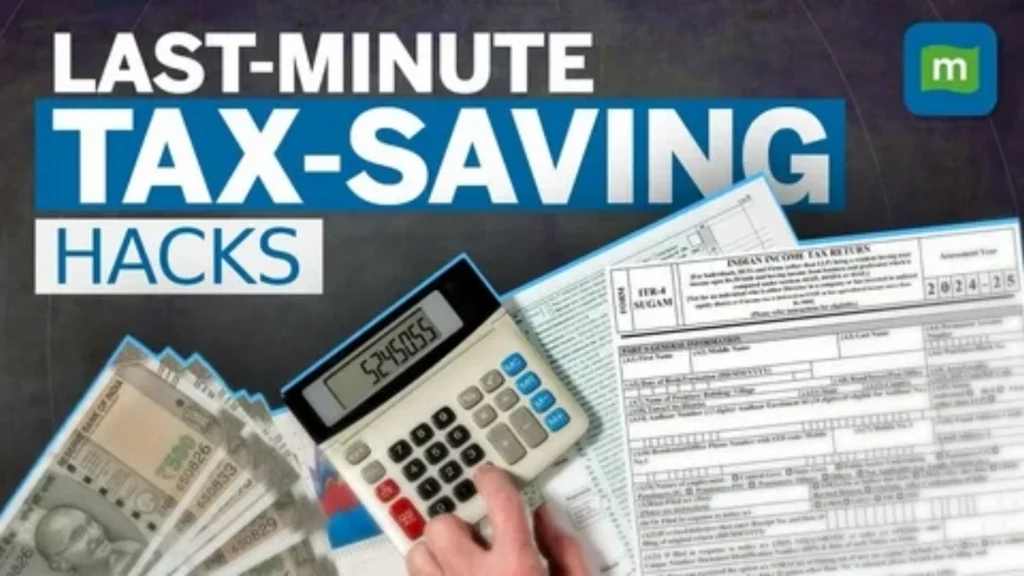Investing in tax-saving bonds is a smart way to reduce your taxable income while earning steady returns. Under Section 80C of the Income Tax Act, 1961, certain bonds allow you to claim deductions of up to ₹1.5 lakh per financial year.
In this guide, we’ll explore:
✔ Best tax-saving bonds eligible under Section 80C (2024 list)
✔ Key benefits of investing in these bonds
✔ Comparison with other 80C investment options
✔ Low-competition keywords for tax-saving bond research
By the end, you’ll know which bonds offer the best tax benefits and whether they fit your financial goals.

1. What Are Tax-Saving Bonds Under Section 80C?
Tax-saving bonds are government or corporate-issued debt instruments that qualify for deductions under Section 80C. These bonds have a lock-in period (usually 5 years) and provide fixed returns.
Key Features of Section 80C Bonds:
✅ Tax Deduction – Up to ₹1.5 lakh per year (under Section 80C).
✅ Fixed Returns – Interest rates are predetermined (typically 6-8% p.a.).
✅ Low Risk – Government-backed bonds are safer than equities.
✅ Lock-in Period – Usually 5 years (cannot withdraw prematurely).
2. Best Tax-Saving Bonds Under Section 80C (2024 Updated List)
Here are the top tax-saving bonds eligible for deductions in 2024:
1. RBI Taxable Bonds (7.75% GOI Savings Bonds)
- Issuer: Reserve Bank of India (Government-backed)
- Interest Rate: 7.75% per annum (taxable)
- Tenure: 7 years (but eligible for 80C deduction)
- Risk Level: Very low (sovereign guarantee)
2. NABARD Rural Bonds
- Issuer: National Bank for Agriculture and Rural Development
- Interest Rate: ~7-7.5% p.a. (taxable)
- Tenure: 5-10 years
- Who Should Invest? Investors looking for semi-government security
3. REC (Rural Electrification Corporation) Bonds
- Issuer: Government-backed REC Ltd
- Interest Rate: ~7.25-7.75% p.a.
- Tenure: 10-15 years
- Taxation: Interest is taxable
4. PFC (Power Finance Corporation) Bonds
- Issuer: Government-owned PFC
- Interest Rate: ~7.5% p.a.
- Tenure: 10 years
- Best For: Long-term investors seeking stable returns
5. Tax-Free Municipal Bonds
- Issuer: Municipal Corporations (e.g., Pune, Bengaluru)
- Interest Rate: 5.5-6.5% p.a. (tax-free)
- Tenure: 10-15 years
- Tax Benefit: No tax on interest (but no 80C deduction)
(Note: Only taxable bonds qualify for Section 80C; tax-free bonds do not.)
3. Benefits of Investing in Tax-Saving Bonds
1. Tax Deduction Under Section 80C
- You can reduce taxable income by up to ₹1.5 lakh per year.
- Works alongside other 80C investments (PPF, ELSS, NSC).
2. Stable & Fixed Returns
- Unlike stocks, bonds provide predictable interest income.
- Helps in financial planning for conservative investors.
3. Lower Risk Than Equities
- Government bonds are almost risk-free.
- Corporate bonds (like REC, PFC) are safer than stocks.
4. Better Returns Than FDs (in Some Cases)
- Some bonds offer 7-8% returns, higher than bank FDs (~6-7%).
- Good for senior citizens needing regular income.
5. No TDS on Interest (if in Demat Form)
- Unlike FDs, bonds in demat form do not deduct TDS.

4. Tax-Saving Bonds vs. Other Section 80C Investments
| Investment Option | Returns (p.a.) | Lock-in Period | Risk Level | Tax on Interest? |
|---|---|---|---|---|
| Tax-Saving Bonds | 6-8% | 5 years | Low-Medium | Yes (except tax-free) |
| PPF | 7.1% | 15 years | Very Low | Tax-free |
| ELSS Funds | 12-15% (avg) | 3 years | High | Tax-free after 3 yrs (LTCG) |
| NSC | 7.7% | 5 years | Low | Taxable |
| 5-Year Tax-Saving FD | 6-7% | 5 years | Low | Taxable |
Best Choice If:
- You want low-risk + tax benefits → Tax-saving bonds
- You seek higher returns → ELSS (but higher risk)
- You prefer tax-free income → PPF
5. Who Should Invest in Tax-Saving Bonds?
✔ Conservative investors (avoiding stock market risks).
✔ Senior citizens needing fixed monthly income.
✔ High-income earners looking to save tax under 80C.
✔ Investors wanting diversification beyond FDs & PPF.
Who Should Avoid?
✖ Investors needing liquidity (lock-in period applies).
✖ Those in lower tax brackets (better options available).
6. Low-Competition Keywords for Tax-Saving Bonds
If you’re researching this topic, use these low-competition SEO keywords:
- “Best tax-saving bonds under 80C in 2024”
- “REC vs PFC bonds which is better?”
- “Taxable vs tax-free bonds under Section 80C”
- “Are 7.75% GOI bonds worth it?”
- “Tax-saving bonds interest rate 2024”
- “How to buy NABARD rural bonds?”
- “Section 80C bonds lock-in period and returns”
7. How to Invest in Tax-Saving Bonds?
Step 1: Choose the Right Bond
- Compare interest rates (RBI, REC, PFC).
- Check credit ratings (AAA-rated safest).
Step 2: Open a Demat Account (if required)
- Some bonds are only available in demat form.
Step 3: Apply via Primary Market or Broker
- New bond issues are announced via RBI, NSE, BSE.
- Can also buy from bond platforms like BondsIndia, GoldenPi.
Step 4: Claim Tax Deduction (Section 80C)
- Mention investment while filing ITR.
- Keep bond certificates for proof.
8. Limitations of Tax-Saving Bonds
⚠ Taxable Interest – Unlike PPF, interest is added to income.
⚠ Lock-in Period – Cannot exit before 5 years.
⚠ Lower Returns Than Equity – Stocks/ELSS may offer higher growth.
9. Final Verdict: Are Tax-Saving Bonds Worth It?
✅ Yes, if:
- You want safe, fixed-income investments.
- You need tax savings under 80C.
- You’re in the 30% tax bracket (higher benefit).
❌ No, if:
- You want higher returns (ELSS/Stocks better).
- You need liquidity (PPF/ULIP allow partial withdrawals).
Best Alternative?
A mix of ELSS + PPF + Bonds optimizes tax savings & returns.


